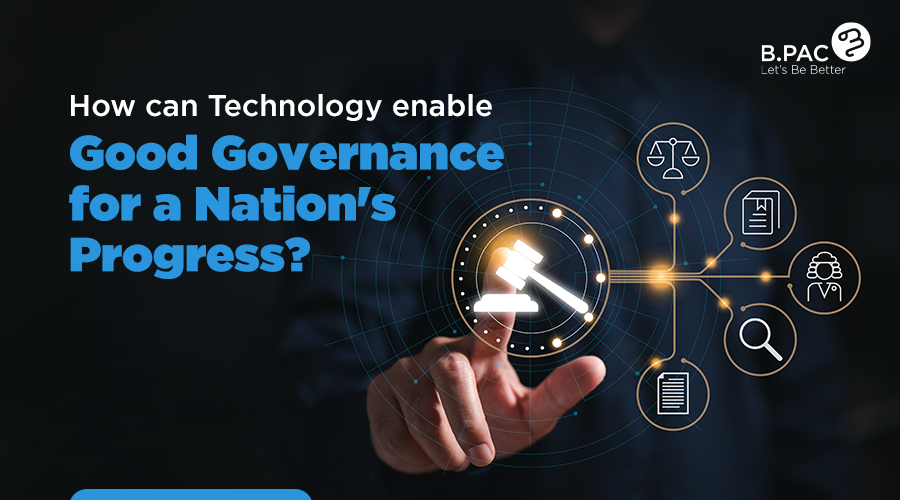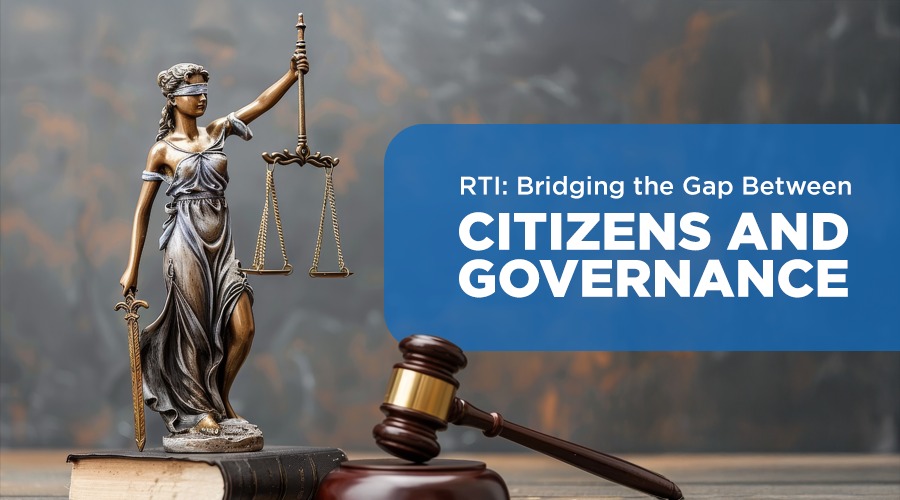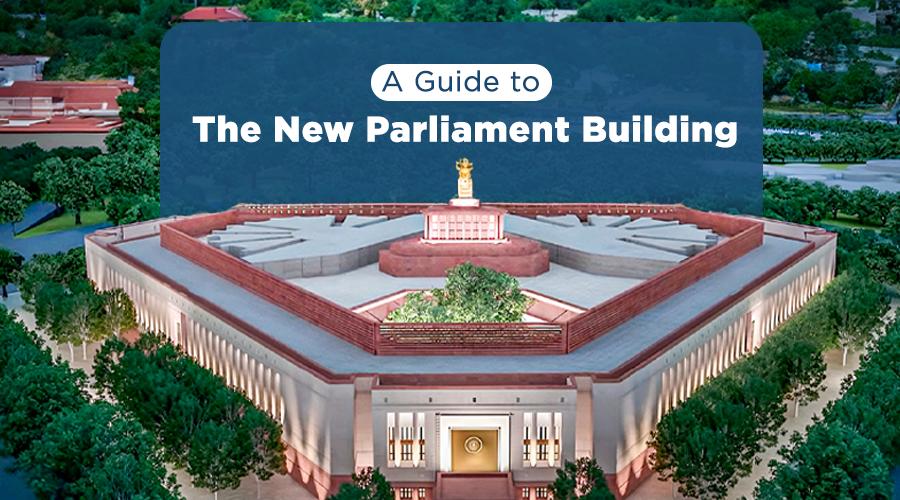The rapid evolution of technology has fundamentally altered the landscape of governance, presenting unprecedented opportunities to enhance efficiency, transparency, and accountability. In the past, technological advancements, such as the advent of the internet, facilitated improved communication, data access, and citizen engagement. This shift allowed governments to streamline administrative processes, share information more readily, and involve citizens in decision-making. In the current context, emerging technologies like artificial intelligence, blockchain, and big data analytics are reshaping governance by providing tools for predictive analysis, secure data management, and real-time decision support. These developments contribute to more informed policy-making and responsive public services. Looking forward, the potential for further transformative changes is immense. Innovations like smart cities, decentralised governance structures, and advanced data-driven decision-making could redefine the very essence of good governance. Explore how technology has transformed governance in the past, its current implications, and the potential future developments that could further redefine the concept of good governance.
Past: The Dawn of Technological Influence
In the past, technologies have been used to improve efficiency in private businesses, empower consumers, and level the playing field. For instance, the use of technology in the education sector empowered students and parents to make more informed decisions about their education.
The pre-independent India witnessed a gradual but significant technological evolution that contributed to administrative efficiency. The introduction of the telegraph system in the mid-19th century, for instance, revolutionised communication between different regions. This innovation facilitated quicker exchange of information, enabling administrators to make informed decisions promptly. The railway network not only connected diverse territories but also facilitated the movement of people and resources, fostering economic development and administrative coordination.
Electoral Reforms:
The introduction of ballot elections marked a departure from traditional methods. The use of paper ballots allowed for a more transparent and standardised voting system. This innovation laid the foundation for democratic practices, emphasising the importance of individual voices in the governance process.
Administrative Reforms:
Technological innovations were also integrated into administrative reforms aimed at enhancing efficiency and transparency. The establishment of the Imperial Records Department (later known as the National Archives of India) in 1891 was a significant stride. This institution not only preserved historical records but also facilitated better record-keeping, ensuring that administrative decisions were well-documented and traceable.
Technology’s influence on governance started becoming apparent with the advent of the digital age. The internet and digital technologies brought about unprecedented changes in governance by making information more accessible and communication faster, thus making businesses more competitive.
However, the past also witnessed some of the pitfalls of technology. The internet, originally designed to transmit information between computer networks, opened unexpected avenues for crime and financial fraud. Social media platforms, intended to connect friends and families, became focal points of election controversies and political influence. Technology came handy to manipulate elections as well. (Add a few examples).
Present: The Age of Digital Governance
Today, technology is playing a vital role in transforming governance. It is making governments more efficient, transparent, responsive, and effective. It has the potential to overcome some of the greatest challenges our society faces, including climate change, famine, and disease
According to the World Governance Indicators compiled by the World Bank, on a scale of 0 to 100 in terms of government effectiveness, for e.g., India scores 57, Indonesia 55, the Philippines 52, and Thailand 67. For perspective, advanced economies in Asia such as Japan and Singapore score 93 and 100, respectively.
The current era is marked by the use of cloud computing, big data analytics, and artificial intelligence in governance. For instance, technology is being used to improve the government procurement process. By digitising forms and using cloud-based technology, governments can make bids easier to sign and submit, thereby driving up competition and saving money.
However, the present also poses challenges. The rapid pace of technological advancement often leads to regulations lagging behind. The tech sector, a major source of jobs and revenue for many countries, presents challenges in setting clear standards and rules for an ever-evolving technological landscape.
Technology Projects in India & benefits:
1. UIDAI: National ID systems to improve tax compliance and provision of public services: The Unique Identification Authority of India (UIDAI) plays a pivotal role in advancing the country’s governance through the implementation of a robust National ID system. By providing every citizen with a unique identification number, the UIDAI facilitates improved tax compliance and the efficient provision of public services. This system streamlines identification processes, reducing the likelihood of identity fraud and ensuring a more accurate and inclusive database for tax authorities. Additionally, the National ID system enables targeted and personalised delivery of public services, enhancing the government’s ability to reach and assist diverse segments of the population
2. Reducing corruption in land management systems using Blockchain: Leveraging Blockchain technology has emerged as a promising strategy for reducing corruption in land management systems. Traditional land management processes are often susceptible to corruption due to opaque transactions, forged documents, and inefficient record-keeping. Blockchain, with its decentralised and transparent ledger system, offers a transformative solution. According to a study by Transparency International, an estimated $700 million is being paid in bribes to land registration administrators across India. The government of Andhra Pradesh state is utilising blockchain technology to address issues of fraud and corruption in the state by implementing a blockchain-based platform which would make land ownership data records encrypted and thus incorruptible and transparent.
3. Technology in Education to promote good governance: In the modern era, educational technology plays a pivotal role in cultivating informed and engaged citizens, essential for a well-functioning democracy. Online platforms, e-learning modules, and digital resources facilitate widespread access to quality education, breaking down geographical barriers and ensuring inclusivity. Moreover, technology enhances administrative efficiency in educational institutions, streamlining processes such as student enrollment, assessment, and record-keeping.
4. Digital India Initiative: Commenced in 2015, the initiative envisions leveraging technology to bridge the digital divide, ensuring that the benefits of advancements reach every corner of the country. Key pillars of Digital India include providing broadband connectivity to rural areas, promoting electronic governance, and delivering essential services digitally. Initiatives such as Aadhaar, the world’s largest biometric identification system, and the Digital Locker contribute to streamlined and secure citizen services. E-governance platforms enhance transparency, reduce corruption, and improve the efficiency of government operations.
5. e-Governance Platforms: E-Governance platforms have emerged as transformative tools in modern governance, leveraging technology to enhance the efficiency, transparency, and accessibility of public services. These platforms facilitate the seamless interaction between government agencies and citizens, streamlining administrative processes and reducing bureaucratic hurdles. The National Portal of India, the Prime Minister of India Portal, Aadhaar, online tax filing and payment, digital land management systems, the Common Entrance Test, and other examples are all examples of e-governance.
6. Geographical Information System (GIS): GIS has emerged as a pivotal technology, significantly influencing decision-making processes and enhancing overall efficiency in India. The application of GIS in various government sectors has proven instrumental in addressing challenges related to urban planning, resource management, disaster response, and public health. Government agencies utilise GIS to map and analyse geographical data, allowing for informed policy formulation and strategic planning.
7. Swachh Bharat Mission (SBM): The Swachh Bharat Mission (SBM) in India has incorporated technology as a fundamental pillar to achieve its ambitious goal of ensuring cleanliness and sanitation throughout the country. As per PIB India, Swachh Bharat Mission-Urban 2.0, emphasis on achieving ‘Garbage Free Cities’ within the next five years. This ambitious initiative addresses multiple facets of waste management, including the remediation of legacy dumpsites, efficient handling of construction and demolition waste, and the effective management of plastic waste. Technologies such as the Swachhata App and the inclusion of SBM toilets on Google Maps have been a driving force in the success of Swachh Bharat Mission-Urban.
8. Goods and Services Tax Network (GSTN): It is a vital technological backbone that underpins the implementation of the Goods and Services Tax (GST) regime in India. Established as a non-profit organisation, GSTN acts as a comprehensive platform for the smooth and efficient management of GST-related data, filing, and compliance processes. It serves as a digital bridge between taxpayers, businesses, and the government, facilitating seamless communication and transaction processing.
9. BHIM (Bharat Interface for Money): Bharat Interface for Money, commonly known as BHIM, stands as a revolutionary digital payment platform in India. Launched by the National Payments Corporation of India (NPCI), BHIM is designed to facilitate fast, secure, and convenient cashless transactions. BHIM aims to empower users to make digital transactions with ease, even for those who may not have sophisticated smartphones. Operating on the Unified Payments Interface (UPI), BHIM allows users to link multiple bank accounts and conduct transactions seamlessly through a single mobile application.
10. Crime and Criminal Tracking Network & Systems (CCTNS): The Crime and Criminal Tracking Network & Systems (CCTNS) stands as a transformative initiative in the realm of law enforcement, playing a pivotal role in fostering good governance. Deployed with the aim of modernising and digitising the policing system in India, CCTNS provides an integrated platform for law enforcement agencies to store, share, and access crime-related information seamlessly. By facilitating real-time data exchange between police stations and various law enforcement agencies across the country, CCTNS contributes to efficient crime detection, investigation, and prevention.
Technology Projects in Karnataka:
1. Bhoomi: Karnataka’s Bhoomi project is a pioneering initiative that uses technology to digitise land records. It has streamlined the process of updating and accessing land records, reducing corruption and improving transparency.
2. Nemmadi Project: This initiative aims to provide citizens in Karnataka with easy access to government services through Common Service Centers (CSCs). It involves the use of technology to deliver various services and information to rural areas.
3. Vahana Mitra: This is a Karnataka government initiative that uses technology to provide financial assistance to auto and taxi drivers during the COVID-19 pandemic. The application process and disbursement of funds are facilitated through an online platform.
4. Sakala Services: Karnataka’s Sakala initiative focuses on providing time-bound government services to citizens. The Sakala online portal enables citizens to apply for and track the status of various services, reducing bureaucratic delays.
5. KSRSAC (Karnataka State Remote Sensing Applications Centre): KSRSAC utilises satellite technology and remote sensing applications to aid in planning and development activities. It provides valuable geospatial information for various sectors, including agriculture, urban planning, and disaster management.
6. MobileOne: An integrated mobile services delivery gateway that allows citizens to access various government services and information through a mobile application, promoting ease of use and accessibility.
7. Janasevaka: This is an integrated service delivery project in Karnataka that leverages technology to provide doorstep delivery of government services.
8. E-Sugam: Karnataka implemented the E-Sugam system to facilitate the electronic generation of waybills for the movement of goods.
Future: The Promise of Technological Governance
As India propels itself into the future, the role of technological innovation in governance cannot be overstated. In an era where artificial intelligence (AI), the Internet of Things (IoT), and blockchain are reshaping industries, their application in governance holds the promise of increased efficiency, transparency, and citizen-centric services.
Artificial Intelligence (AI):
AI is poised to revolutionise governance by offering data-driven insights, predictive analytics, and automated decision-making. In Future India, AI can be employed in various sectors, such as healthcare, education, and law enforcement, to enhance service delivery and resource allocation.
Internet of Things (IoT):
In governance, IoT can play a pivotal role in infrastructure management, environmental monitoring, and public services. Smart city initiatives, for instance, can utilise IoT to improve traffic management, waste disposal, and energy efficiency. Real-time data from IoT devices empowers authorities to make timely decisions, ensuring a more responsive and adaptive governance framework.
Blockchain Technology:
Blockchain, known for its secure and transparent ledger system, can transform the way transactions and data are managed in governance. In Future India, blockchain can be employed for secure and verifiable record-keeping, reducing fraud and corruption.
As technologies become more complex and intertwined with our lives, new challenges around privacy, security, and ethical use of technology are likely to emerge. Therefore, it is essential to establish a governance framework that embraces disruptive technologies while ensuring that risks are identified and managed.
Bottomline:
As we navigate this evolving landscape, the question lingers: How do we ensure that our technological advancements propel us toward a future marked by not just efficiency, but true societal betterment? The journey of shaping good governance through technology demands our collective reflection and commitment. The conversation on technology’s role in governance is not a monologue; it’s a dynamic dialogue between the aspirations of a society and the tools that define its governance. It is an invitation for us all to engage, question, and collaboratively forge a path where technology becomes the beacon for a governance that empowers, unites, and truly serves the people.





